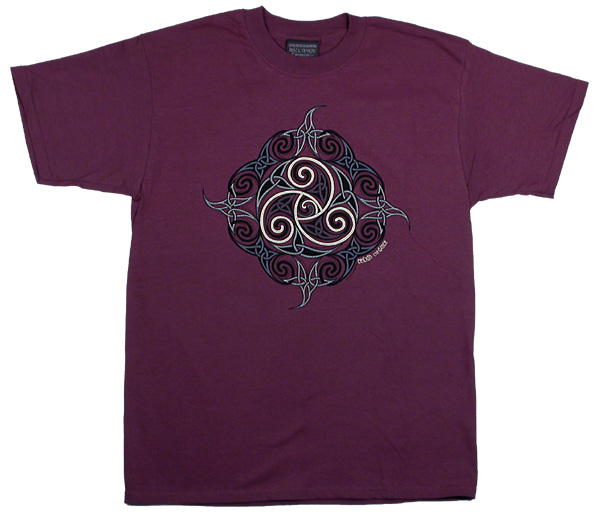Halford
You're getting your symbols mixed up a bit.
What Dana is talking about is either the hidari gomon, or the mitsu tomoe.
The swastikas are another symbol altogether - the Omote Manji (right swirling) or Ura Manji (left swirling). Hitler took one of these two (I forget which) for his symbol of The Third Reich.
The symbol on the flag of the Isle of Man
might be thought of as a type of mitsu tomoe. But the symbol is of European (Celtic? Norse?) origin, and is called a triskelion.

The three legs symbol seems to have been adopted in the Thirteenth Century as the armorial bearings of the native kings of the Isle of Man, whose dominion also included the Hebrides - the Western Isles of Scotland.
After 1266, when the native dynasty ended and control of the Island passed briefly to the Crown of Scotland and then permanently to the English Crown, the emblem was retained, and among the earliest surviving representations are those of the Manx Sword of State, thought to have been made in the year 1300 AD. The Three Legs also appeared on the Manx coinage of the seventeenth-nineteenth centuries, and are still in everyday use in the Manx Flag.
Why the Three Legs were adopted as the royal arms of the Manx kingdom is unknown. It was originally a symbol of the Sun, the seat of Power and Life. In ancient times the emblem was particularly connected with the island of Sicily (probably because of its triangular outline) but the Sicilian "Legs" were always naked and generally displayed Medusa's head at the central point.
A rather similar device was popular amongst the Celts and Norsemen in NW Europe, and in view of this it has been suggested that the Manx Three Legs were a heraldic modification of a native badge or emblem. Support for this theory may be seen in the appearance of the 'triskele', or simplified "Three Legs" emblem, on coins of the tenth century Norse King, Anlaf Cuaran, whose dominion included Dublin and the Isle of Man; and it is probable that the later Manx Kings were a branch of the same dynasty.
All the early examples of the Manx "Legs" show them as if running sunwise (i.e. clockwise) and to that extent the heraldic symbol of the Island still retained an essential feature of the ancient pagan sun-symbol. Although sometimes drawn anti-clockwise, that is singularly inappropriate.
- Government, Isle of Man
Here's a nice Celtic Triskelion on a shirt.

- Bill






